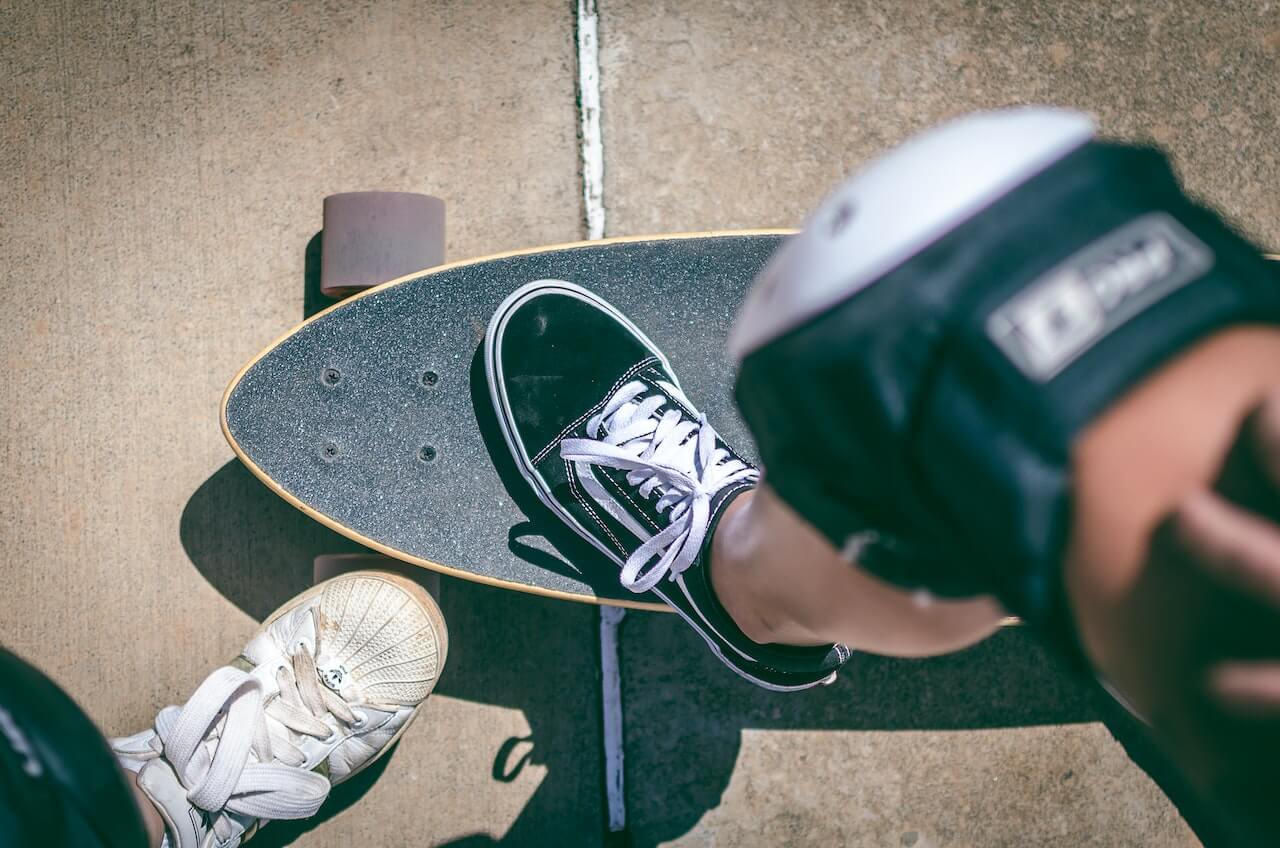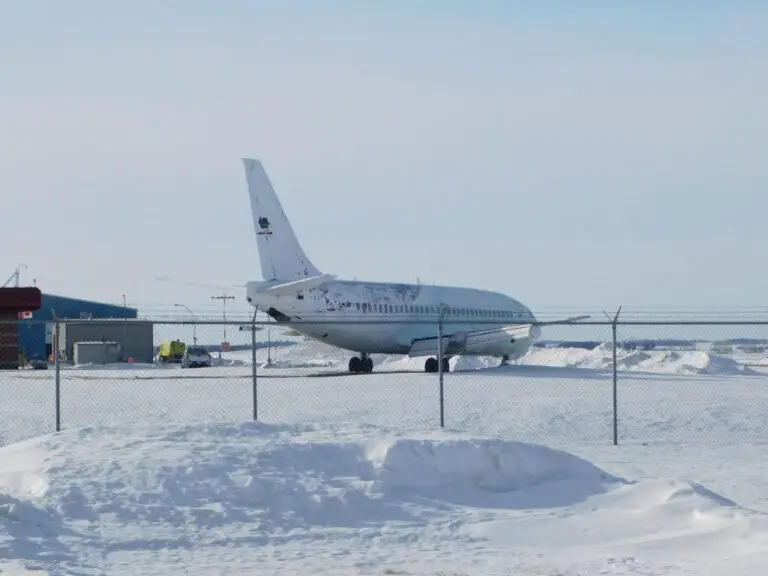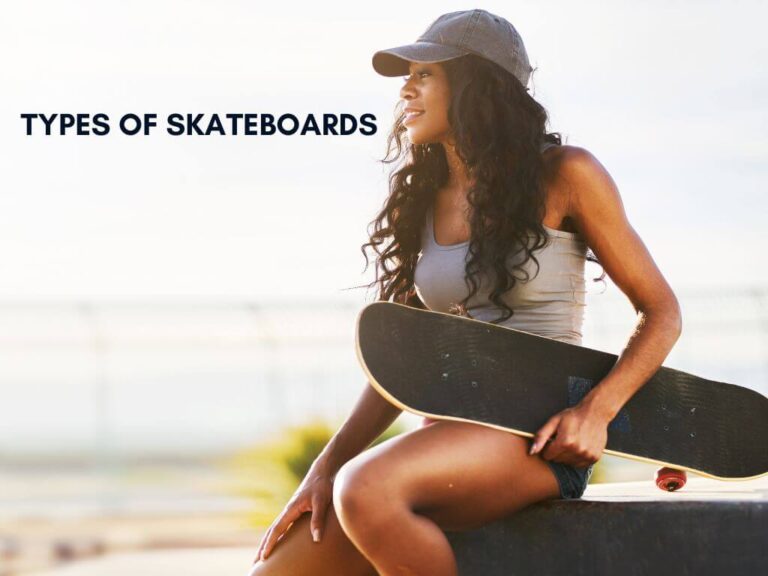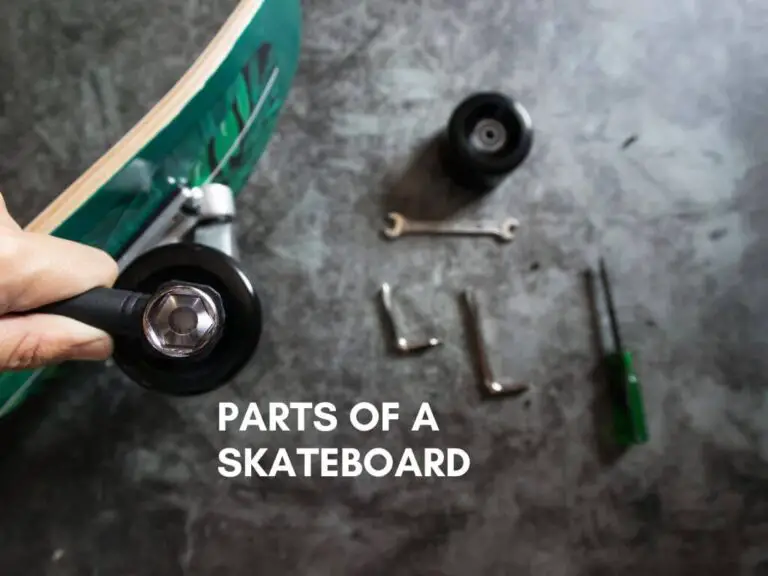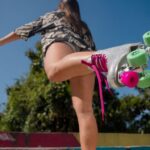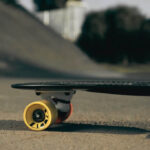Skateboard wheel size is an important factor to consider when choosing a board, especially if you’re interested in doing tricks. Smaller wheels are generally preferred by street skaters because they’re more lightweight and easier to flip. However, there are some trade-offs, such as reduced speed and stability.
Do Smaller Wheels Make Skateboard Tricks Easier? In this blog post, we’ll take a closer look at the pros and cons of smaller skateboard wheels, and discuss whether or not they make tricks easier. We’ll also provide some tips on choosing the right wheel size for your needs.
Understanding Skateboard Wheels
Skateboard wheels play a crucial role in how your skateboard performs. They have three primary functions:
- Stability: The stability of your skateboard depends on the size and shape of the wheels. Wider wheels provide more stability, making it easier to maintain balance and control, especially during high-speed rides or when going over rough surfaces.
- Grip: Grip refers to how well your skateboard stays connected to the ground. It is essential for maintaining control while making turns or carving. Softer wheels generally offer better grip as they conform to the road surface, providing more traction.|
- Maneuverability: Maneuverability relates to how responsive your skateboard is to your movements. Smaller wheels are more maneuverable as they have a smaller contact patch with the ground, allowing for quick turns and tricks. They are ideal for street skateboarding and technical tricks.
Do Smaller Wheels Make Skateboard Tricks Easier?
Skateboard wheels come in various sizes, typically measured in millimeters (mm). Here are some common wheel sizes and their characteristics:
- Small Wheels (48-52mm): These wheels are ideal for street skateboarding and technical tricks. They offer excellent maneuverability, making it easier to perform flip tricks and slides. However, they may sacrifice some speed and stability compared to larger wheels.
- Medium Wheels (53-56mm): Medium-sized wheels strike a balance between maneuverability and speed. They are versatile and work well for both street and park skateboarding. These wheels provide a good mix of stability and control for various tricks and terrains.
- Large Wheels (57mm and above): Larger wheels are suitable for cruising, downhill rides, and rough surfaces. They offer more speed and stability, making them great for transportation and longer rides. However, they might feel less responsive for technical tricks.
Misconceptions about Wheel Size and Trick Performance
- “Bigger wheels are better for tricks”: This is not entirely accurate. While larger wheels provide more stability and speed, they can feel less responsive for certain tricks. For technical street tricks, smaller wheels are often preferred as they allow for quicker rotations and more control.
- “Smaller wheels are only for beginners”: Some beginners may opt for smaller wheels because they are commonly used in street skateboarding. However, the choice of wheel size depends on personal preference and the type of skateboarding you enjoy, not just your skill level.
- “Hard wheels are always better”: Wheel hardness, or durometer, affects grip and ride comfort. Harder wheels (over 95A) are more durable and slide easily, but they may provide less grip, especially on rough surfaces. Softer wheels (under 95A) offer better grip but can wear down faster.
understanding skateboard wheels is essential for customizing your skateboard to match your preferred style of skateboarding. Consider the functions of stability, grip, and maneuverability when choosing the right wheel size and hardness for your skating needs.
Advantages of Smaller Wheels for Skateboarding Tricks
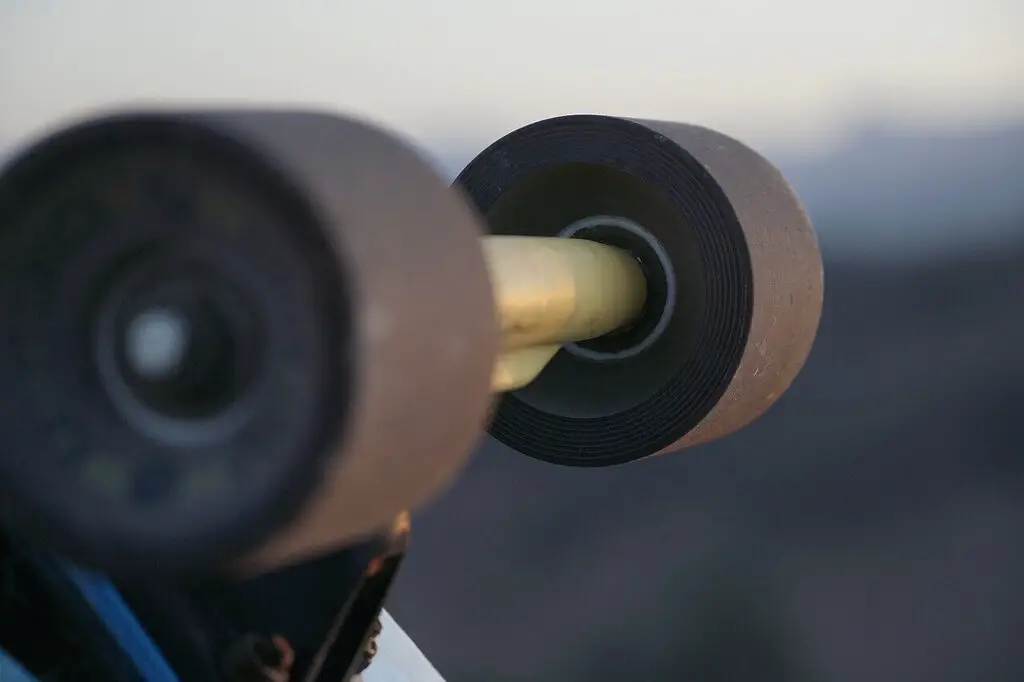
Smaller skateboard wheels offer a number of advantages for performing tricks. They are lighter, easier to flip, and more responsive than larger wheels. This makes them ideal for technical street skating and park skating.
Here are some specific examples and evidence to support these claims:
- Lighter weight: Smaller wheels are lighter than larger wheels, which makes them easier to flip and rotate. This is especially important for tricks like kickflips, heelflips, and pop shove-its.
- Easier to flip: Smaller wheels have a shorter circumference, which makes them easier to spin in the air. This is important for tricks like varial flips and double flips.
- More responsive: Smaller wheels have a shorter wheelbase, which makes them more responsive and easier to control in tight spaces. This is important for tricks like grinds and slides.
Here are some specific examples of tricks that are easier to perform with smaller wheels:
- Kickflips: Smaller wheels make it easier to flick the board up and around your feet for a kickflip.
- Heelflips: Smaller wheels make it easier to pop the board up and around your heels for a heelflip.
- Pop shove-its: Smaller wheels make it easier to rotate the board 360 degrees under your feet for a pop shove-it.
- Varial flips: Smaller wheels make it easier to spin the board 180 degrees in the air for a varial flip.
- Double flips: Smaller wheels make it easier to spin the board 360 degrees in the air twice for a double flip.
- Grinds: Smaller wheels make it easier to balance on the board while grinding on rails and ledges.
- Slides: Smaller wheels make it easier to control the board while sliding on rails and ledges.
Transition sentence: While smaller wheels offer a number of advantages for performing tricks, they also have some disadvantages. For example, they can be slower than larger wheels and they can be more difficult to ride over rough surfaces. However, for many skaters, the advantages of smaller wheels for performing tricks outweigh the disadvantages.
Smaller skateboard wheels offer a number of advantages for performing tricks. They are lighter, easier to flip, and more responsive than larger wheels. This makes them ideal for technical street skating and park skating. While smaller wheels also have some disadvantages, for many skaters, the advantages outweigh the disadvantages.
Personal Experience
I have personally skated with both smaller and larger wheels, and I can attest to the advantages of smaller wheels for performing tricks. When I first started skateboarding, I used larger wheels because they were more stable and easier to ride over rough surfaces. However, as I started to learn more tricks, I found that smaller wheels were much easier to flip and control.
I now skate with 52mm wheels, which is a good size for all-around street skating. They are small enough to be easy to flip and control, but they are still large enough to be stable and ride over rough surfaces.
If you are serious about learning skateboarding tricks, I recommend using smaller wheels. They will make it easier to learn and progress.
Disadvantages of Smaller Wheels for Skateboarding Tricks

Smaller wheels are often seen as being more responsive and easier to flip, which can be beneficial for certain tricks. However, there are also a number of disadvantages to using smaller wheels for skateboarding tricks.
Slower Speed
One of the main disadvantages of smaller wheels is that they are slower than larger wheels. This is because smaller wheels have less surface area, which means they have to rotate more times to cover the same distance as a larger wheel. This can make it difficult to generate enough speed to perform certain tricks, such as ollies and pop shuvs.
Less Stability
Smaller wheels also provide less stability than larger wheels. This is because they have a smaller surface area, which makes them more likely to get caught in cracks and crevices in the ground. This can lead to falls, especially when performing tricks at high speeds.
More Difficult to Ride Over Rough Terrain
Smaller wheels are also more difficult to ride over rough terrain than larger wheels. This is because they have less surface area to absorb shocks. This can make it difficult to skate on ramps and other uneven surfaces without falling.
More Likely to Get Stuck in Cracks and Crevices
As mentioned above, smaller wheels are more likely to get stuck in cracks and crevices in the ground. This can lead to falls, especially when performing tricks at high speeds.
Specific Examples
Here are a few specific examples of how the disadvantages of smaller wheels can affect skateboarding tricks:
- A skater trying to ollie over a curb may have difficulty generating enough speed with smaller wheels.
- A skater trying to pop shuvit over a gap may find that their smaller wheels get caught in the gap, causing them to fall.
- A skater trying to skate on a ramp with smaller wheels may find that they lose their balance more easily due to the smaller wheels’ reduced stability.
- A skater trying to grind a rail with smaller wheels may find that their wheels get caught in the rail, causing them to fall.
How to Choose the Right Size Wheels for Skateboarding Tricks
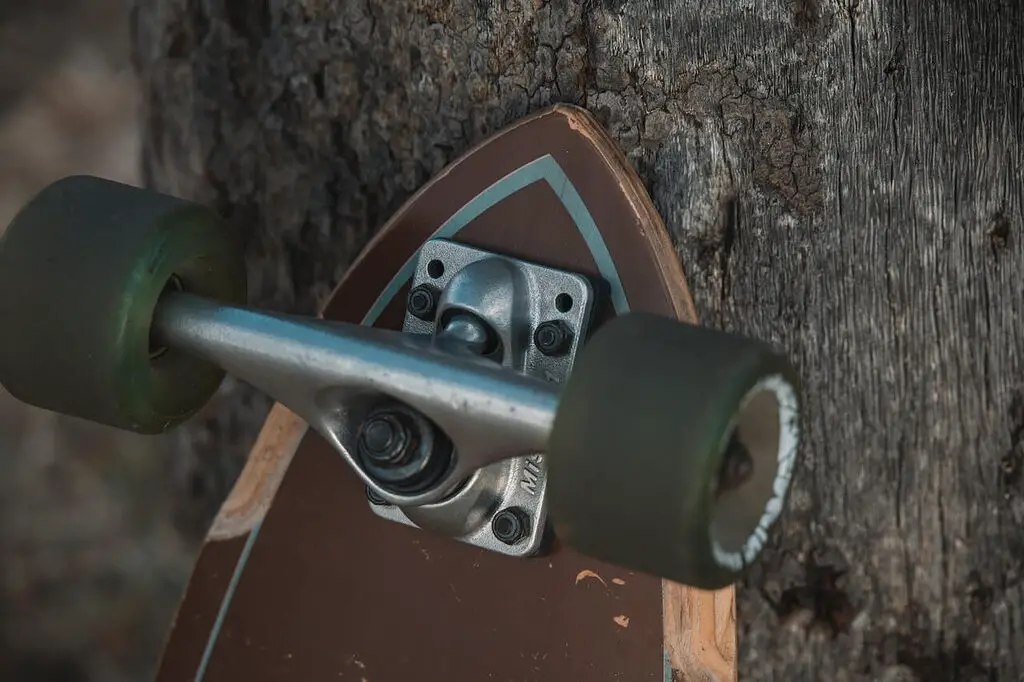
Skateboard wheels come in a variety of sizes, and the right size for you will depend on a number of factors, including your skating style, the type of terrain you skate on, and your personal preferences.
Some things to consider when choosing skateboard wheel size:
- Skating style: If you’re a beginner, you may want to start with larger wheels (56mm or higher). Larger wheels are more stable and easier to control, making them a good choice for beginners. As you become more experienced, you can experiment with smaller wheels (54mm or lower). Smaller wheels are more responsive and maneuverable, making them ideal for technical tricks.
- Terrain: If you skate on rough terrain, you’ll want to choose larger wheels with a wider contact patch. This will help you roll over bumps and cracks more easily. If you skate on smooth terrain, you can choose smaller wheels with a narrower contact patch. This will give you more grip and control when performing tricks.
- Personal preferences: Ultimately, the best way to choose skateboard wheel size is to experiment and find what works best for you. Some skaters prefer larger wheels, while others prefer smaller wheels. It’s important to find a size that feels comfortable and allows you to skate your best.
Few specific recommendations for choosing the right wheel size for your individual needs:
- Beginners: 56mm or higher
- Street skaters: 52mm – 54mm
- Park skaters: 54mm – 58mm
- Transition skaters: 58mm – 60mm
- Technical skaters: 50mm – 52mm
It’s also important to consider the durometer (hardness) of your skateboard wheels. Durometer is measured on the Shore A scale, with higher numbers indicating harder wheels. Harder wheels are faster and more durable, but they can also be more difficult to control. Softer wheels are slower and less durable, but they offer more grip and control.
General recommendations for choosing the right wheel durometer:
- Street skaters: 99A – 104A
- Park skaters: 97A – 101A
- Transition skaters: 95A – 99A
- Technical skaters: 92A – 95A
Keep in mind that these are just general recommendations. The best way to find the right wheel size and durometer for you is to experiment and find what works best for your skating style and the terrain you skate on.
Choosing the right size wheels for your skateboard can be a daunting task, but it’s important to find the right size for your individual needs and skating style. By considering the factors mentioned above, you can choose the perfect set of wheels to help you improve your skating and perform your best.
Conclusion
In conclusion, the intricate interplay between wheel size and trick difficulty in skateboarding showcases the depth of this dynamic sport. As skaters,Do Smaller Wheels Make Skateboard Tricks Easier? it’s essential to embrace experimentation and revel in the journey of uncovering our perfect setup. Don’t be afraid to explore different wheel sizes and setups to find what works best for your unique style and preferences. Share your experiences and insights with the skateboarding community; let’s engage in an open dialogue about this exciting topic. Remember, the beauty of skateboarding lies not only in nailing tricks but in the ever-evolving process of self-discovery on our boards. So, let’s ride, connect, and thrive together in this boundless world of skateboarding!
FAQ’s
Do smaller wheels provide more pop for ollies?
Yes, smaller wheels can provide more pop for ollies. The reduced weight and size allow skaters to get their board higher off the ground, which is crucial for ollies and various flip tricks.
Do smaller wheels affect the speed of the skateboard?
Smaller wheels have a slightly slower top speed compared to larger wheels. However, their acceleration and maneuverability make them ideal for street skating and tricks that require quick movements.
Can I switch from larger wheels to smaller wheels easily?
Switching from larger wheels to smaller wheels may feel different at first, but with practice, most skaters can adapt and appreciate the benefits that smaller wheels offer for tricks.
Are smaller wheels better for street?
For street skating, smaller wheels (50-56mm) reign supreme: better pop for tricks, easier flips, and ideal for grinds. They feel nimble, but beware of rough roads and pebbles! Think agility over comfort. Bigger wheels offer smooth rides, but lack that snappy trickster vibe. Choose your weapon!
Why are harder wheels better for tricks?
Hard wheels (90-100A) grip less, giving cleaner slides and grinds for smoother trick execution. They also pop faster for ollies and flips, letting you conquer those airs with ease! Just avoid rough terrain or your ankles might cry.
Can you do tricks on soft wheels?
Technically, yes! You can do some tricks with soft wheels, but it’ll be like trying to tap dance in boots.
Here’s why:
Grip: Soft wheels grab the ground, making slides and grinds tough (think brakes, not butter!).
Pop: They’re less responsive, so ollies and flips won’t have that snappy freestyle feel.
Weight: Bigger, softer wheels can feel sluggish for technical tricks.
That said, some simple tricks are still doable, and soft wheels are great for cruising and carving.

